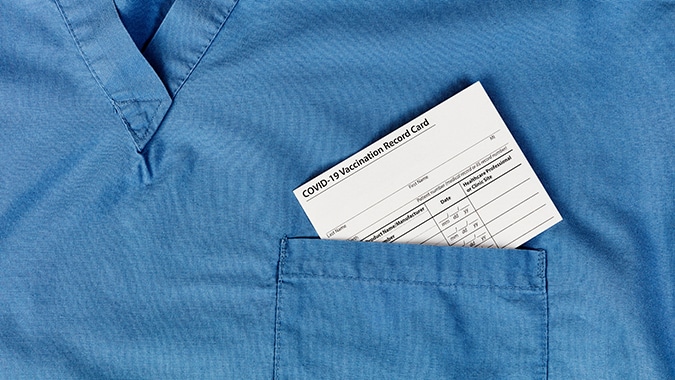Hospitals have been on the front line of the COVID-19 response from the very beginning, so it’s difficult to think of them as having been part of the shutdown. But during the pandemic, treatments that are a regular part of a hospital’s business have been deferred in a way that impacts both the economic and physical health of New Jersey.
At the same time, healthcare providers have been hailed as heroes for treating the sick at great personal risk to their own health, yet for hospitals to regain their financial footing, they will have to win over a public worried about their safety in places that have been at the center of the pandemic.
At a special hearing today by state Senate strategists working to develop ways to safely restart the state’s economy, three hospital executives shared what reopening will look like, what they are doing to protect the public, and the need to reassure patients that it’s safe to return once facilities resume offering elective surgeries May 26.
While some have joked about bringing back cosmetic surgery, elective surgery actually includes a wide range of medically necessary procedures. They’re considered “elective” because the patient’s life is not in danger so they can be scheduled in advance, like knee and hip replacements, mastectomies, even donating organs.
Barry Ostrowsky, president and CEO of RWJBarnabas Health, said the fact that patients are putting off these procedures adds urgency to reopening healthcare facilities for non-COVID-19 treatments.
“I think if we wait until there’s some announcement about a vaccine, we are unfortunately going to compound the number of people suffering,” he said.
Screening and Cleaning
Robert Garrett, CEO of Hackensack-Meridian Health, outlined what will likely be the playbook for healthcare facilities throughout the state, if not the entire country: Everyone coming in will be screened for coronavirus symptoms and have their temperature taken; all non-COVID-19 sections of the hospital will be walled off to create a barrier against spreading the virus; every surface will undergo rigorous cleaning; and air and water quality will be continually monitored.
These steps reflect that while the number of cases are going down, healthcare providers should be prepared to be dealing with this disease for some time.
“Our testing of all admitted patients—those with symptoms and those without—has already found that 5% in our hospitals and 3% in our nursing homes are testing positive for COVID-19,” Garrett said. “This should serve as a reminder that although it may feel like we can resume back to normal, it’s important that we continue to take special precautions.”
Innovation
Holy Name Hospital in Teaneck, while not as large as Hackensack Meridian or RWJBarnabas, was pretty much ground zero when the coronavirus hit New Jersey, leading CEO Michael Maron to fear that his facility would be overrun quickly.
Holy Name instituted a number of innovative techniques to prevent coronavirus spread that Maron thinks will make the institution safer for reopening.
Proving that size is irrelevant to innovation, Holy Name built new intensive care units in areas not originally intended for treating patients, like the hospital’s auditorium. The rooms were designed specifically to make the most of limited staff and “stretch out” hard-to-obtain personal protection equipment (PPE).
The new ICUs also had negative air pressure to prevent any airborne coronavirus from drifting into other areas of the hospital.
“We have every intention of leaving those ICUs up for the next couple of years,” Maron said.
The innovation doesn’t stop there. Maron said his engineering team designed an “iso-pod” or isolated negative-pressure chamber that can be placed over a patient in a stretcher or a bed to reduce the flow of virus out into the surrounding community. Testing has proven it to be very effective.
“All of our front-line people…the majority of those staff have come back with negative antibodies” showing that they did not contract the virus, Maron said.
Make it Personal
Yet another obstacle hospitals will need to overcome is public perception. These places have treated more than 100,000 COVID-19 patients over the past two months, so people will naturally be fearful of exposure if they go to one them.
Alleviating that anxiety begins with transparency about sanitizing and testing procedures. But for Ostrowsky, that’s not enough. Facilities should be able to provide specific answers to people’s questions and address their concerns one on one. Patients should even be encouraged to ask questions like, will I be tested when I get there, can I bring someone with me, or am I going to a place that was a COVID unit?
“I don’t think you alleviate anxiety on a general basis,” Ostrowsky said. “That’s a very personally felt emotion, and we need to be able to address it.”
Such reassurance will be even more meaningful if it comes from a facility’s healthcare providers, which means they must be convinced it’s safe.
“One of the most trusted sources of information with respect to healthcare are our physicians in our state,” Garrett said. “It’s important that we communicate the safety of our hospitals and physicians offices directly and through physicians. If our physicians are convinced it’s safe for their patients to come back, I believe that will go a long way in convincing patients that it’s safe.”
